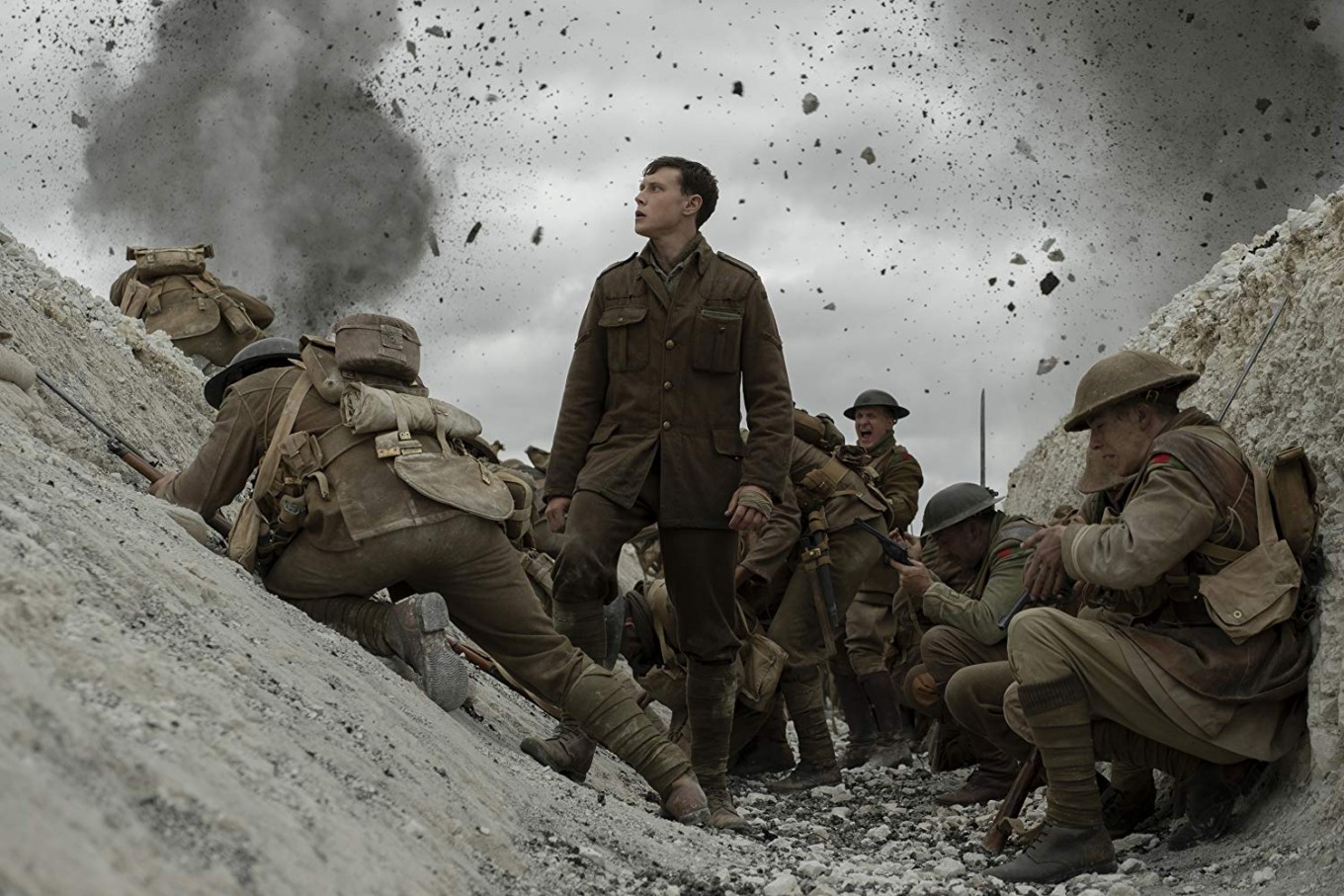Popular Reads
Top Results
Can't find what you're looking for?
View all search resultsPopular Reads
Top Results
Can't find what you're looking for?
View all search results'1917': An explosive and gripping depiction of war
1917 may not entirely reinvent the genre nor does it philosophize something new about war, but it’s still an epic war movie that also happens to be the greatest technical achievement of 2019.
Change text size
Gift Premium Articles
to Anyone
S
un Tzu, a Chinese philosopher and military strategist who is credited as the author of the widely influential work The Art of War, once advised that there was a mutually exclusive relation between war and peace.
“In peace, prepare for war,” he said. “In war, prepare for peace.”
World War I, which lasted from 1914 to 1918, was called the war to end all wars. Nearly 40 million people, mostly men between the ages of 20 and 50, were killed. Meanwhile, those who survived also had to deal with the horrors that came afterward, like the physical and psychological trauma they had to endure every day.
Sam Mendes’ (American Beauty, Skyfall, Revolutionary Road) Golden Globe-winning 1917 may not entirely reinvent the genre nor does it philosophize something new about war, but it’s still an epic war movie that also happens to be the greatest technical achievement of 2019.
The first thing that comes to mind when we’re talking about 1917 is its visuals. The movie is designed to entirely look like it was shot in one long take. Again, it’s not something that is entirely new in cinema. The Oscar-winning Birdman by Alejandro González Iñárritu and plenty of other films have done what Mendes set out to do here: tailoring one scene to another as invisibly and seamlessly as possible, so that the result will look unbroken. The visual alone, thanks to cinematographer Roger Deakins and editor Lee Smith, is simply masterful.
The main story of the movie is rather straightforward: Two young British lance corporals stationed in France, Blake and Schofield, are assigned to cross enemy lines and deliver an urgent message for the commander of the Second Battalion, who’s ready to order his troops to attack withdrawing German soldiers.
The message that Blake and Schofield must deliver is to inform the commander that this withdrawal is actually a trap and his order to attack would send 1,600 soldiers to their slaughter. On top of that, Blake’s big brother is among the troops on the edge of getting annihilated if he and Schofield fail to their task. The stakes here are both personal and Herculean.
As the two of them begin to make their way across seemingly endless trenches full of abandoned bodies, dead horses and barbed wire, Mendes and Deakins throw us in an unpredictable, explosive journey that requires our undivided attention. We can feel the soldiers' exhaustion, fear and anxiety as Mendes follows these two young men closely, trailing behind them every step of the way while pulling us closer in what may be a suicide mission.
Some critics say the unbroken shot is just a gimmick and unnecessary. Though I cannot fully disagree with them, the technique actually gives the film a sense of urgency that haunts every battle in every war. The design of the movie accentuates both the idea of how these two can never rest in their assignment and the immemorial idea of war as a horrific, unrelenting episode that can end lives at any moment.
Every second that passes and every breath they take are captured fluidly by Deakins throughout. Wherever they go, Deakins’ camera makes sure that we keep following them. Be it in an abandoned German army post, torrential stream or the ruined village of Écoust-Saint-Mein in France, the camera never rests, perfectly portraying the sense of restlessness.
Though there are several noticeable edits and transitions, Mendes, Deakins and Lee’s technical wizardry remains incredibly clean and tidy until the very end. The lighting, production design and especially Thomas Newman’s score, which gets increasingly explosive as the film crescendos into a heart-thumping climax, enhances the restive atmosphere that’s already built from the get-go.
The list of the film’s technical achievements seems to never end, but 1917 is more than that. It is also an emotional journey of two ordinary men who have to face the brutality and futility of war while not knowing whether they can survive or not. Most of the film’s emotional heights are reached not by manufacturing the sorrow and the horror that Blake and Schofield have to endure, but rather by simply displaying their challenges along the way.
Sure, it could’ve been more stirring, but much like Dunkirk, which is powerful in its simplicity and bleakness, the understated emotional tone beneath the 1917’s grandiose exterior is what makes it more genuine and grounded.
Much of this happens because Mendes is able to draw strong performances from his cast. Dean-Charles Chapman (Game of Thrones, The King) is terrific at conveying his character’s anxiety. There are also A-list cameos from actors such as Benedict Cumberbatch, Andrew Scott, Richard Madden and Colin Firth, who are equally great despite their limited dialogues.
But it is George MacKay’s (Captain Fantastic) forceful and compelling performance that carries the film from start to finish. He moves through every terror with facial expressions, gasps and exhaustion that speak volumes about the fear Schofield is facing and a loss he has to deal with in this journey.
Even if there’s no dialogue, with the way MacKay carries his character’s emotions, 1917 will still have its gut-punching touches. Too bad his understated performance has been mostly shut out by awards voters.
As explosive as it is gripping, 1917 is an intimate and strangely emotional depiction of war as what it truly is: a hellscape that will always be futile no matter what angle you see it from. (dev/wng)











